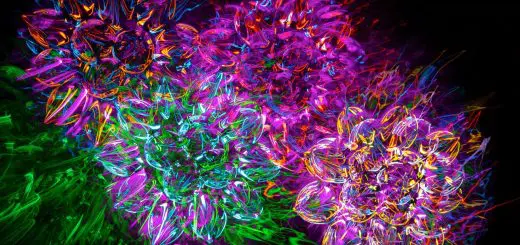Yin and Yang in Taoism: Symbolism of Unity

Looking for more amazing products? Check out our online store and explore our collection here! Happy shopping!
Before diving in, please note: This post is for informational purposes only. If you’d like to know more about how we approach topics, feel free to check out our friendly Disclaimer Page.
Hey there, amazing readers! 
We’re committed to delivering quality posts, and your support (even just sticking around despite the ads) means everything to us. So, bear with us, and thanks for helping us keep the good vibes rolling. Now, on to the fun stuff!
TRANSLATE BUTTON AT THE END OF THE ARTICLE
A Quick Overview: Introduction to Yin and Yang in Taoism
Yin and Yang are fundamental concepts in Taoist philosophy, representing the dualistic nature of the universe.
In Taoism, the belief is that everything in the world is interconnected and exists in a state of constant change and balance.
The concept of Yin and Yang symbolizes the duality and complementary nature of opposing forces, such as light and dark, hot and cold, and male and female.
This balance is essential for harmony and order to exist in the universe.
The Concept of Dualism in Taoist Philosophy
Taoism, a Chinese philosophical and religious tradition, emphasizes the harmony of opposites and the balance of complementary forces.
The concept of dualism in Taoist philosophy is rooted in the idea that everything in the universe contains both Yin and Yang aspects.
Yin represents darkness, passivity, femininity, and coldness, while Yang symbolizes light, activity, masculinity, and warmth.
Together, they form a harmonious whole, where one cannot exist without the other.
Understanding the Symbolism of Yin and Yang
The Yin and Yang symbol, known as the Taijitu, is a circular diagram divided into two halves by an S-shaped line.
The black side represents Yin, while the white side represents Yang.
Within each half, there is a small dot of the opposite color, symbolizing the presence of Yin within Yang and vice versa.
This symbol illustrates the interconnectedness and interdependence of Yin and Yang, showing that they are not separate entities but rather two parts of a unified whole.
The Interconnectedness of Yin and Yang
Yin and Yang are not static or fixed concepts but are constantly in flux, moving and changing in relation to each other.
This fluidity reflects the dynamic nature of the universe, where nothing remains the same and everything is interconnected.
In Taoist philosophy, the balance between Yin and Yang is seen as essential for maintaining harmony and order in all aspects of life, from nature and society to the individual.
Balancing Opposing Forces in Taoist Beliefs
Taoism teaches that balance and harmony can be achieved by recognizing and embracing the dualistic nature of existence.
By understanding the interplay between Yin and Yang, individuals can learn to navigate the complexities of life and find equilibrium in the midst of change.
Taoist practices, such as meditation, qigong, and tai chi, aim to cultivate this balance within oneself and harmonize one’s energy with the forces of the universe.
Yin and Yang as Representations of Unity
While Yin and Yang are opposing forces, they are also complementary and interconnected, symbolizing the unity of all things in the universe.
The Taoist concept of Wu Wei, or non-action, encourages individuals to flow with the natural order of Yin and Yang, rather than resist or disrupt it.
By embracing the unity of Yin and Yang, individuals can find peace and harmony within themselves and with the world around them.
How Yin and Yang Influence Taoist Practices
In Taoism, Yin and Yang influence various spiritual practices and rituals aimed at aligning the body, mind, and spirit with the natural flow of energy in the universe.
Taoist priests and practitioners often seek to harmonize the Yin and Yang energies within themselves through meditation, breathing exercises, and mindful living.
By balancing these energies, they believe they can achieve greater health, vitality, and spiritual enlightenment.
The Role of Yin and Yang in Traditional Chinese Medicine
Traditional Chinese medicine (TCM) is based on the concept of Yin and Yang and the balance of vital energy, known as Qi, within the body.
Practitioners of TCM use acupuncture, herbal remedies, and other therapies to restore harmony between Yin and Yang and promote healing.
By addressing imbalances in Yin and Yang, TCM aims to treat not just the symptoms but the root causes of illness, promoting holistic well-being and vitality.
Applying Yin and Yang in Feng Shui Principles
Feng Shui, the Chinese art of arranging spaces harmoniously, is also guided by the principles of Yin and Yang.
In Feng Shui, balance is key, and the placement of objects and elements in a space is thought to influence the flow of energy, or Qi.
By incorporating Yin and Yang principles into the design of a home or workspace, individuals can create a harmonious environment that promotes health, prosperity, and happiness.
Symbolic Depictions of Yin and Yang in Art
Yin and Yang are commonly depicted in art and symbolism throughout Chinese culture, representing harmony, balance, and unity.
The Taijitu symbol is often seen in paintings, sculptures, and textiles, as well as in architecture and design.
Artists use Yin and Yang imagery to convey the interconnectedness of all things and the cyclical nature of life, reminding viewers of the eternal dance between opposing forces.
Modern Interpretations of Yin and Yang in Society
In modern society, the concept of Yin and Yang continues to influence various aspects of culture, philosophy, and psychology.
From the balance of work and leisure to the harmony of relationships and the interconnectedness of global issues, the principles of Yin and Yang can be seen in many facets of contemporary life.
By recognizing and embracing the unity of opposing forces, individuals can navigate the complexities of the modern world with greater wisdom and insight.
Embracing Yin and Yang for Personal Growth
For individuals seeking personal growth and self-improvement, the principles of Yin and Yang offer valuable guidance on how to achieve balance and harmony in all aspects of life.
By cultivating awareness of one’s own Yin and Yang energies and striving for equilibrium between them, individuals can enhance their physical, emotional, and spiritual well-being.
Embracing the unity of Yin and Yang allows for greater self-acceptance, resilience, and inner peace, leading to a more fulfilling and meaningful life journey.
Conclusion
In Taoism, Yin and Yang symbolize the unity and interconnectedness of all things in the universe.
The concept of dualism underscores the complementary nature of opposing forces, while the balance between Yin and Yang is seen as essential for harmony and order.
By understanding and embracing the symbolism of Yin and Yang, individuals can cultivate balance, harmony, and unity within themselves and with the world around them.
Through Taoist practices, traditional Chinese medicine, Feng Shui principles, and artistic depictions, the influence of Yin and Yang continues to shape modern interpretations of unity and interconnectedness in society.
Embracing the principles of Yin and Yang for personal growth can lead to greater self-awareness, resilience, and inner peace on life’s journey.

The Enlightenment Journey is a remarkable collection of writings authored by a distinguished group of experts in the fields of spirituality, new age, and esoteric knowledge.
This anthology features a diverse assembly of well-experienced authors who bring their profound insights and credible perspectives to the forefront.
Each contributor possesses a wealth of knowledge and wisdom, making them authorities in their respective domains.
Together, they offer readers a transformative journey into the realms of spiritual growth, self-discovery, and esoteric enlightenment.
The Enlightenment Journey is a testament to the collective expertise of these luminaries, providing readers with a rich tapestry of ideas and information to illuminate their spiritual path.
Our Diverse Expertise
While our primary focus is on spirituality and esotericism, we are equally passionate about exploring a wide range of other topics and niches 

To ensure we provide the most accurate and valuable insights, we collaborate with trusted experts in their respective domains 
Our blog originally focused on spirituality and metaphysics, but we’ve since expanded to cover a wide range of niches. Don’t worry—we continue to publish a lot of articles on spirituality! Frequently visit our blog to explore our diverse content and stay tuned for more insightful reads.
Hey there, amazing reader! 
Check out our store here and take a peek at some of our featured products below! Thanks for being awesome!











